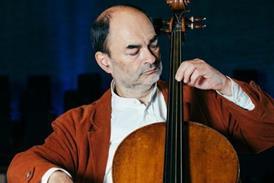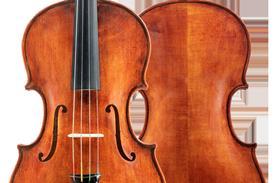To mark the centenary of the completion and premiere of Elgar’s Cello Concerto, cellist Raphael Wallfisch reflects upon the period and circumstances surrounding the work’s creation and subsequent life

The following extract is taken from The Strad’s October 2019 issue, available to view here. To order the print edition, click here
Elgar had proved himself to be a master of large-scale forms such as the symphony and oratorio, but by the second half of 1918 the late chamber works and Cello Concerto (opp.82–85) were either well advanced or completed, and with them he was moving in a new direction. Indeed, in August 1918, Alice wrote in her diary that Elgar was writing ‘wonderful new music, different from anything else of his’; and the next month she wrote that he was composing ‘real wood sounds’.
It is clear from his diaries that Elgar was impressed by the effects of the changing light on the Sussex countryside. He wrote to his friend Sidney Colvin, who was to be the dedicatee of the Cello Concerto: ‘The sun is climbing over our view in golden mist… I have never seen anything so wonderful… I see now where the great painter Turner found such sights as Norham Castle’.
Never, in all probability, has so great an orchestra made so lamentable a public exhibition of itself… No one seemed to have any idea of what it was the composer wanted
Extremely keen to show his renowned prowess in Russian music and Wagner, Coates programmed Scriabin’s Poem of Ecstasy, Borodin’s Symphony no.2 and Wagner’s ‘Forest Murmurs’ (Siegfried) in a concert that was to include the venerable Elgar conducting the premiere of his newly written Cello Concerto. Alice Elgar’s diaries are explicit on the matter:
The result was a performance that generated mixed reviews. Though other critics were far more positive, Ernest Newman reported in The Observer that the pieces conducted by Coates had been splendid, but that in the Elgar Cello Concerto, ‘Never, in all probability, has so great an orchestra made so lamentable a public exhibition of itself… No one seemed to have any idea of what it was the composer wanted. The work itself is lovely stuff, very simple – that pregnant simplicity that has come upon Elgar’s music in the last couple of years – but with profound wisdom and beauty underlying its simplicity.’
- Read: Ballet based on the life of Jacqueline du Pre coming to Covent Garden
- Watch: Jacqueline du Pre on learning to live without the cello
- Read: The way they played: Jacqueline du Pre
Early performances and recordings from the 1920s onwards by Beatrice Harrison, W.H. Squire and Pablo Casals were followed eventually by those by the great French cellists Paul Tortelier, Pierre Fournier and André Navarra, and notably the British cellist Antony Pini.
Then came the thunderbolt combination of du Pré, Barbirolli and Elgar – capturing the imagination of all who heard it. Du Pré’s unfettered emotional response to the music was quite visceral, but not necessarily what Elgar had in mind. He marked nearly every nuance very clearly in the score, and that isn’t always what we are aware of in her performances. Nevertheless, the magnetism of her personality, and the power of her playing resulted in bringing the piece to multitudes all over the world, and generally increasing its popularity incomparably.
It is a remarkable phenomenon in classical music that to this day du Pré’s interpretation is the benchmark performance of this concerto, a piece that ultimately has had a profound effect on millions of listeners of every nationality. The music conveys so strongly a powerful nostalgia for a world changed and lost forever after the disaster of the Great War, an emotion that must have been puzzling to those who heard it at the time.
To read the full article in The Strad’s October 2019 issue, click here. To order the print edition, click here



































No comments yet